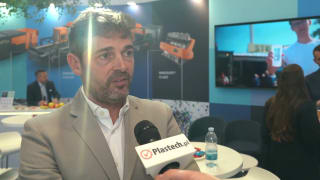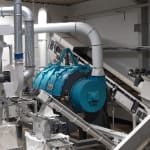
Global plastic production is approx. 367 million tonnes per year and, according to forecasts, could approach 600 million tonnes by 2050. The absence of a global, binding agreement on handling plastic waste leaves the industry facing regulatory uncertainty. In the European Union, the Packaging and Packaging Waste Regulation (PPWR) already introduces recycled-content requirements, but many implementation aspects remain open. In this context, the importance of process solutions that deliver consistent recyclate quality is growing. Vecoplan points to dry cleaning as a key step in preparing waste streams for downstream processing, enabling clean and homogeneous flakes without the use of water.
"We consider dry cleaning a key technology in plastics processing—not only until clearly defined guidelines are introduced, but also after they take effect," says Daniel Wienand, Head of Sales Europe at Vecoplan. "Using our shredding and dry-cleaning technology, we convert various material streams into cleaned flakes that can be used for many different purposes. Dry cleaning is an absolutely critical process that creates clear added value across a wide range of applications."
Vecoplan announced the acquisition of Pla.to, a specialist in washing and dry-cleaning technologies. At K, the company will present the largest dry-cleaning system to date from Pla.to’s portfolio. Together with Pla.to, Vecoplan AG now offers a complete scope of services from shredding to plastics cleaning.
From shredding and cleaning to clean flakes
Post-consumer materials often contain dust, paper fibers, labels, and organic residues. Effective pre-treatment is necessary to obtain clean flakes. Shredding is the starting point for subsequent stages. Vecoplan’s VIZ shredder processes post-consumer and post-industrial streams, delivering a uniform particle size that stabilizes downstream steps.
The next stage is dry cleaning, in which contaminants are removed mechanically without water. The heart of the system is an impact-plate rotor operating in a centrifuge with a basket-type perforated screen. Rotor motion loosens and separates soiling, while fibers and dust are extracted. A wear-resistant steel interior, replaceable rotor plates, and an integrated cleaning system minimize downtime and ensure service life.

In dry-cleaning technology, contaminants such as paper fibers, dust, and organic residues are removed mechanically. The rotating rotor separates soiling, while fibers and dirt are reliably extracted.
In the system described, a key element is the perforated screen basket through which the separated unwanted particles are effectively removed from the system.
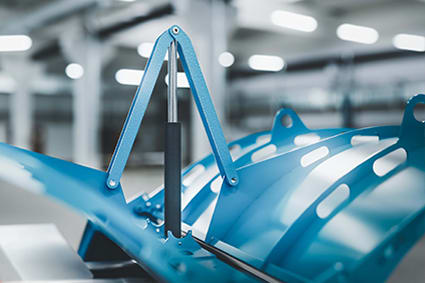
In the foreground is a blue perforated sheet-metal body that serves as a drum or screen.
The system is complemented by separation solutions and drying equipment. The portfolio includes, among others, separation washers and friction washers, separation machines, centrifugal dryers, and thermal drying units that prepare the material for further processing and improve the quality of the output flakes.
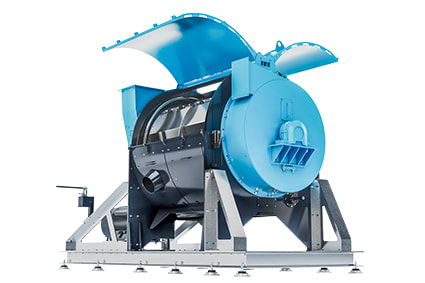
Dry-cleaning machine, characteristic design with a robust steel frame and discharge unit.
Applications and effects of the dry-cleaning process
Dry cleaning is used to prepare fractions for chemical recycling. Streams routed to chemical processes must meet minimum requirements for cleanliness and uniformity. Pre-removal of dust and residues improves feedstock parameters, facilitating the breakdown of fractions down to molecular chains and the synthesis of new polymers.
The technology also serves as a preliminary stage before wet washing. After shredding and dry cleaning, coarser contaminants are separated, so cleaner material enters the wet processes. This reduces water and energy consumption and improves the overall economics of the line.
For lower-quality materials, such as mixed plastics not intended for the production of high-quality recyclates, pre-cleaning enables their direct use as regranulate in the manufacture of durable plastic products, e.g., pallets or thick-walled injection-molded parts.
Complete offering and presentation at K
"Together with Pla.to we are creating a comprehensive solution from shredding to cleaning. This enables even complex plastic waste, such as multilayer food packaging, to return to the raw-material cycle. We are therefore well positioned to meet future requirements seamlessly, e.g., recycled-content percentages under the EU Packaging and Packaging Waste Regulation (PPWR)," explains Martina Schmidt, Senior Vice President Recycling at Vecoplan.
The offering covers the full spectrum of washing technologies, including dry-cleaning solutions along with separation and friction washing equipment, separation, and drying. "By providing all key processing stages from a single supplier, we not only simplify our customers’ processes but also increase the quality of recycled materials. This is an important step toward a well-functioning circular economy," adds Martina Schmidt.
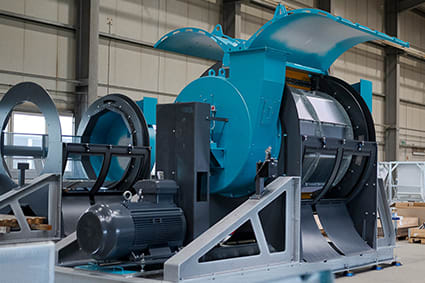
Vecoplan, together with its subsidiary Pla.to, offers a dry-cleaning machine.
Dry cleaning enables various waste streams to be processed into cleaned flakes suitable for a wide range of applications, from mechanical recycling to preparation for chemical recycling. Even with the introduction of defined minimum shares and quality standards for recyclates, it will remain an essential step. "A circular economy starts not with regulations but with technology," concludes Martina Schmidt. "By intelligently combining shredding and cleaning, we create the conditions for high-quality recyclates, whether they are processed further mechanically or chemically."

